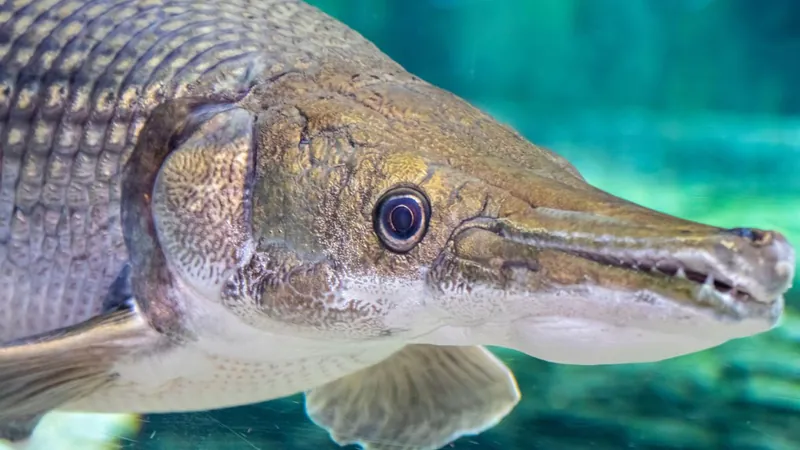
Alligator Gar: The Prehistoric Predator That Defies Evolution for 100 Million Years!
2024-10-05
Introduction
The alligator gar (Atractosteus spatula) is not just another fish swimming in our waters—it's a living testament to the earth's ancient history, thriving in rivers, reservoirs, and coastal bays across the southwestern United States all the way down to Veracruz, Mexico.
Unique Characteristics
But what makes this remarkable species stand out? For starters, these massive fish boast a menacing appearance with their long snout, thick armored scales, and two rows of needle-like teeth. Often mistaken for alligators, these creatures can reach lengths of up to 8 feet (2.4 meters), solidifying their status as the largest known species of gar.
Ancient Lineage
Biologist Jeremy Wade, known for his work on "River Monsters," describes the alligator gar as “a truly prehistoric monster." Their lineage traces back to a time more than 100 million years ago during the Cretaceous period, when dinosaurs roamed the planet. Fossils indicate that these formidable predators have existed in some form since those ancient times.
Survival Mechanism
What has enabled their survival through the ages? Their unique defense mechanism—a tough layer of scales made of a hard enamel called ganoine—acts as armor that has protected them from threats, even predators as fearsome as dinosaurs. Once a gar surpasses a length of one meter, its only major threat becomes the alligator itself.
Growth and Longevity
Growth rates for alligator gars are astonishing. They emerge from tiny, toxic eggs and can reach lengths of 2 feet (0.6 meters) in their first year alone. These fish continue to grow throughout their lifetime and have been known to live up to a century, according to aquatic ecologist Solomon David from the University of Minnesota.
Evolutionary Insights
The alligator gar's evolutionary story is just as captivating. A 2024 study revealed that gars have the slowest rates of evolution among all jawed vertebrates. This means that despite a separation of 100 million years, alligator gars can still produce viable hybrids with longnose gars (Lepisosteus osseus). In context, that’s the same evolutionary timeframe that separates wombats and humans—two species so completely different that they can’t interbreed!
Ecological Significance
So, why should we care about the alligator gar? They are not only a glimpse into our planet's distant past but also critical indicators of ecological health in their habitats. Their persistence through the millennia speaks volumes about resilience and adaptability in the face of environmental changes. As we continue to impact our aquatic ecosystems, understanding and preserving such magnificent species becomes more important than ever.
Conclusion
In conclusion, the alligator gar is a living fossil that embodies the marvels of evolution and the mysteries of our natural world. Let's continue to protect these ancient creatures before they vanish into the annals of history!




 Brasil (PT)
Brasil (PT)
 Canada (EN)
Canada (EN)
 Chile (ES)
Chile (ES)
 España (ES)
España (ES)
 France (FR)
France (FR)
 Hong Kong (EN)
Hong Kong (EN)
 Italia (IT)
Italia (IT)
 日本 (JA)
日本 (JA)
 Magyarország (HU)
Magyarország (HU)
 Norge (NO)
Norge (NO)
 Polska (PL)
Polska (PL)
 Schweiz (DE)
Schweiz (DE)
 Singapore (EN)
Singapore (EN)
 Sverige (SV)
Sverige (SV)
 Suomi (FI)
Suomi (FI)
 Türkiye (TR)
Türkiye (TR)